[Note: Yes, I am having an Xmas Sale. Who isn't, these days? Skip to the end of this column for the full details. Some print availability is limited. —Ctein]
So...
What's been happening the last six-seven months? The downstairs remodel is finally finished. Only took three times as long and twice the money that was budgeted. Sigh. No complaints about our contractor, not a one. Tekhome is fabulous. They do real quality work. George Amarendos is wonderful to work with and handles every aspect of the remodel from permits and architectural plans through subcontractors through final inspections. He worked very hard to keep the costs under control and, so far as we are concerned, went above and beyond the call of duty to do so. It's just, sometimes, with remodeling, well, "things happen." Especially when you're talking about a 60-year-old house whose infrastructure was largely untouched since it was built.
I'm not going to take you through step-by-step. There are 600 photographs that do that. Here's a trio of very pertinent "before" photographs from last April.
The first one shows the (ex) darkroom, stripped of equipment and seeing the light of day for the first time since I moved in.
The second, the state of the unfinished garage after much cleaning and straightening up.
And the is third the location of the former unfinished storeroom (filled with empty bookcases, here).
What's it look like now? Here is the main corridor, where the unfinished garage was. Off to the side are doors leading to the new guestroom, library, Paula's den, utility closet, and the laundry room and bathroom. I'm showing you this because of the ceiling lights. They're 800 lumen 3000K 93CRI LED's that George found on his own. They are very, very fine, absolutely perfect for an artist like me.
These lights are available in both 800 and 1100 lm units. I can't find the datasheet for the 1100 lm unit (DMF's website is ridiculously hard for a techie to navigate) but here's a link to the one for the 800 lm lights.
Which gets me to my new 16x13-foot print studio, located where the old storeroom was. It's lit by five of the 1100 lm units. That's more enough to brightly and evenly illuminate the space. In fact, I have them on a dimmer, so I can reduce the light intensity in the room to more closely match real-world viewing conditions when I need to. (A classic darkroom mistake is having so much light over your print viewing area that you print too dark for normal lighting conditions).
You can get an idea of just how even the illumination is by looking at the 12-foot expanse of wall in the next illustration:
Keep in mind that photographs exaggerate broad brightness differences that are invisible to our eyes. Visually, that wall looks uniform from left to right. It'll be perfect for judging my large panoramas!
Not so by the way, my Epson 9800 printer survived being in storage for six months. I wasn't sure. I ruined a 2200 printer once that way—unfixable head clogs. Yeah, I used up about $50 worth of ink clearing the heads on the 9800, but that's nothing compared to the cost of a new printer.
All did not go entirely smoothly. Some of my negatives were damaged. I'm in the process of repairing them. That will be the subject of a forthcoming column.
• • •
So...as I said at the beginning, I'm having a sale, really great prices with shipping (anywhere in the world) and sales tax covered by me. U.S. orders placed by December 15 will be delivered before Christmas.
My most signature "Christmas in California" photograph is only $175, half its normal price.
I'm clearing out extra prints from one of my TOP sales of three years ago at $225, a savings of $125 over the normal print price...plus that no-shipping-cost-or-sales-tax thing. Availability on these is limited so you should order ASAP.
That's it. Over and out, until next time.
Ctein
Former columnist and master printer Ctein, who has been busy writing his first novel, is still friend-o'-TOP #1. He is heard from in these environs from time to time.
©2014 by Ctein, all rights reserved
(To see all the comments, click on the "Comments" link below.)
Featured Comments from:
David Miller: "Re 'Only took three times as long and twice the money that was budgeted. Sigh': This is exactly the final formula for each of the home additions and renovations I've undertaken in the forty years we've lived in our house. In the long run I'm sure you'll find it is worth the time and money."
MikeR: "I'm psyched on those LED lights. I see what you mean about their website—but it did lead me to a local distributor, who I have contacted to find a local electrical installer. Ctein, I like your style, and your thinking."
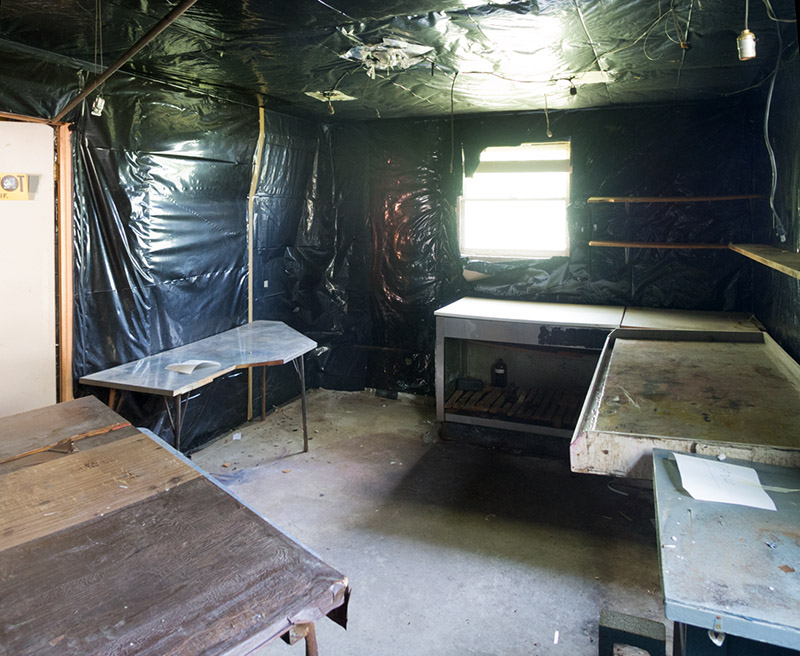
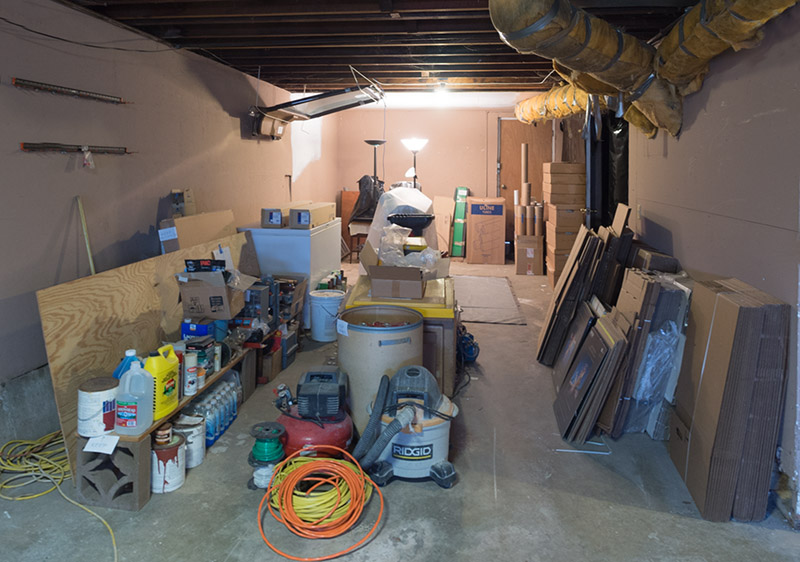
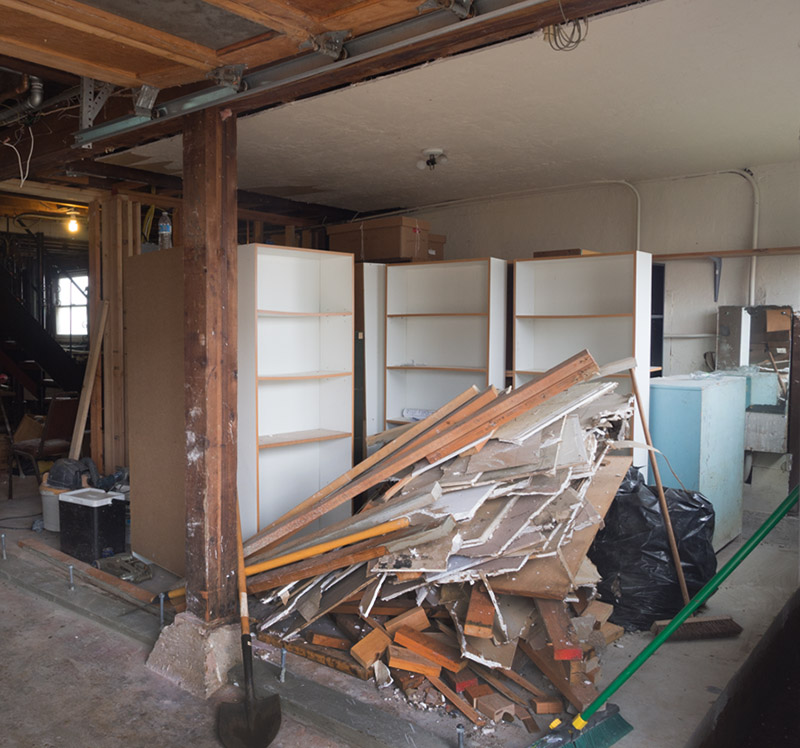
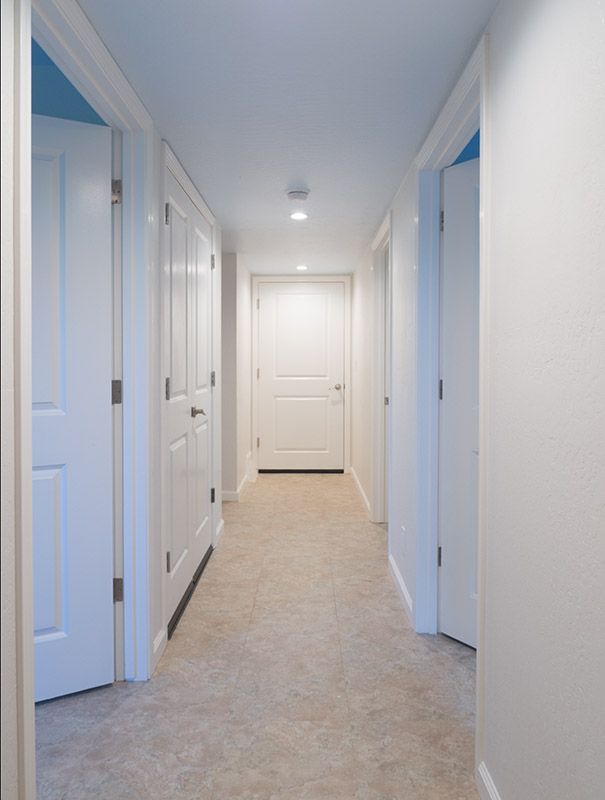
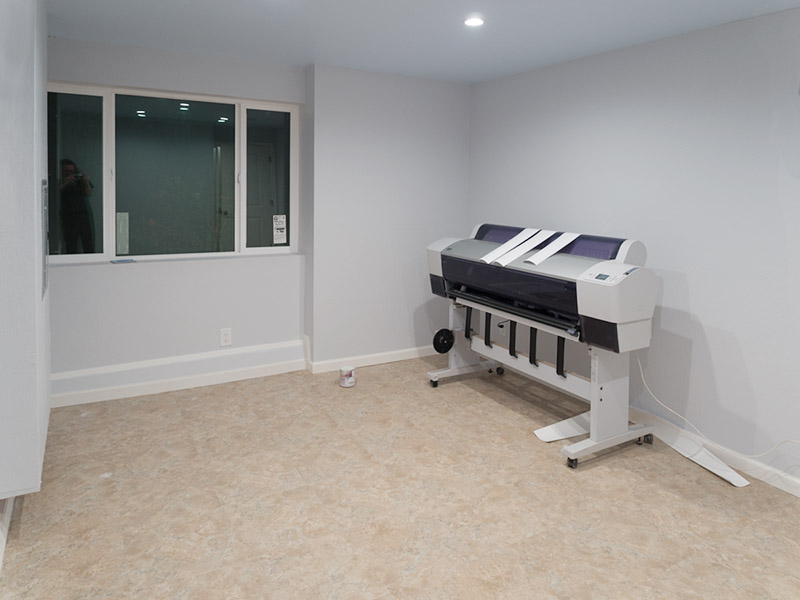
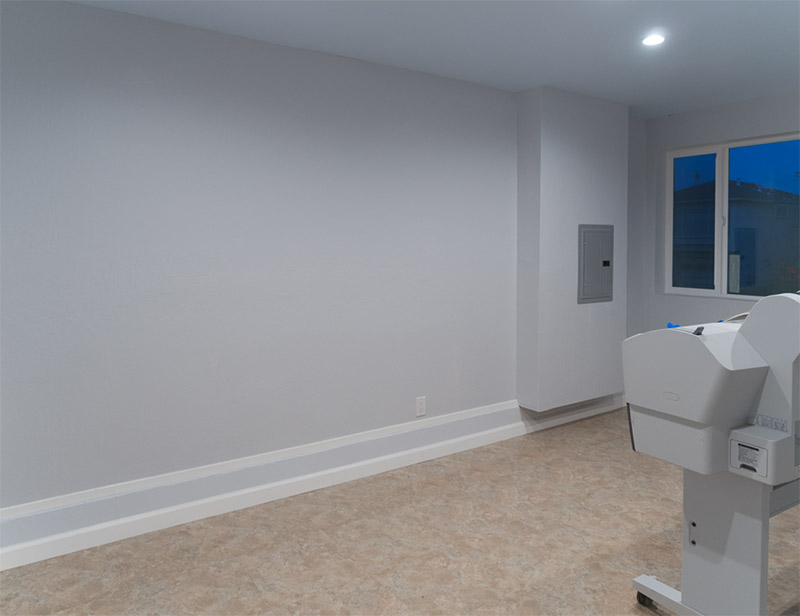
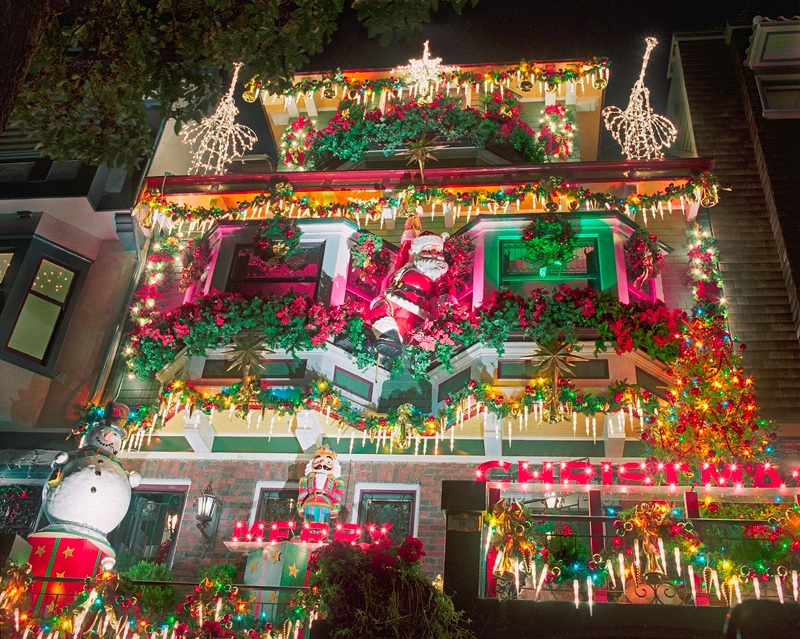

Ctein: Could you say a bit about choosing the color temperature you use in your workspace illumination.
3000K roughly matches incandescent bulbs color temp but my first guess is that one would go for warmer lighting closer to daylight.
What am I missing?
Perhaps that the prints will be shown indoors and illuminated by (pseudo**) incandescents most of the time? And it matches your previous lighting setup.
** as real incandescents are being phased out pretty much everywhere.
Posted by: Kevin Purcell | Tuesday, 09 December 2014 at 07:27 PM
The remodeling job looks terrific -- but one comment about the LED lights for anyone tempted to do something similar, using dimmers. LED lights have to be matched to the dimmers. Not all dimmers work with all LEDs. We found this out after installing several thousand dollars worth of LEDs specifically looking for the kind of light Ctein wanted, light that's good to look at art with. We started with headaches, and then my wife noticed that at certain dimmer-switch positions, the LEDs were strobing...but only at certain switch positions. You could look at them most the time, and everything was fine. Then a switch would get moved, and you'd be reading something, and the lights would be strobing, and the headaches and eyestrain would result. You have to look directly at the lights to see it, and since our lights are recessed in a high ceiling, it was not always obvious. There are long discussions of the problem on the net; we obviously didn't have Ctein's electrical contractors. Ours claimed they knew all about LEDs. They didn't. So be careful; replacing all the dimmers was tiresome.
Posted by: John Camp | Tuesday, 09 December 2014 at 10:19 PM
Ctein, regarding Epson printers I was reading a brief thread on the Leica Users Forum last night about clogged heads. It might be of interest: http://www.l-camera-forum.com/leica-forum/2574732-post1.html
Regards, Geoff
Posted by: Geoff Morgan | Wednesday, 10 December 2014 at 02:58 AM
Is the brighter light perhaps:
www.dmflight.com/Media/055b924c-bb0e-4092-a443-3857d386a692.pdf
Posted by: Auntipode | Wednesday, 10 December 2014 at 04:19 AM
Looks good. A back of a film box calculation shows that you haven't gone mad with the lighting levels. Recommended levels in the UK are amazingly high; I suspect they were set with the help of the lighting manufacturers.
I once went to inspect a car park lighting job with a tall central lighting column, where the lighting scheme was designed by the manufacturers. In the less well lit far corners of the car park, I could easily read the tiny print and see all the colours in the London Underground map in the back of a pocket diary. There was at least a stop more light, maybe two, than was needed.
Posted by: Roger Bradbury | Wednesday, 10 December 2014 at 12:26 PM
Dear David,
Twice as long and 50% more money is the norm around here. I think contractors are just, by their very nature, optimists. I didn't really expect this remodel to come in on budget, because George worked very, very hard to get the costs down to what was within our budget: $65,000, which was a third less than his initial quick walk-through guess. Didn't really expect it to hit that point, but I was plowing every cent from my big blowout dye transfer sale into this remodel, and there's only so much money. So, I kind of figured that it would creep up to his original guess (because experts like this are surprisingly good at guessing) and I was hoping it wouldn't do that, but if it did I could manage. What I didn't expect it to do was double in price. Neither did he.
A lot of it was things like tougher seismic retrofit regulations that kicked in at the start of the year. A lot of it was stuff that the city inspector found when he did his preliminary walk-through, like the way the original knob-and-tube two-strand bare-wire wiring was tied into the upstairs wiring, which meant a lot more all-around rewiring to ensure that the new downstairs grounded wiring was actually SAFE. Which required reworking architectural designs and layouts which ate up bucks. None of it was unreasonable. All of it made sense. It still cost money.
Honestly, if I had known how long it was going to take and how much it would cost, I probably wouldn't have done it. A year from now, I'll probably be quite happy that I didn't know. A lesson in “ignorance is bliss.” But right now I'm feeling mildly stressed out and moderately impoverished. It'll get better.
pax \ Ctein
[ Please excuse any word-salad. MacSpeech in training! ]
======================================
-- Ctein's Online Gallery http://ctein.com
-- Digital Restorations http://photo-repair.com
======================================
Posted by: ctein | Wednesday, 10 December 2014 at 02:41 PM
Looks fantastic. I've been thinking about some changes to my home lighting lately and been a bit concerned on how easy it would be to get LED that reproduce colors accurately. I assume you already did some tests on how accurate the color reproduction is when lit by the LEDs; if not too much trouble, could you summarize what the result was?
Posted by: Oskar Ojala | Wednesday, 10 December 2014 at 02:56 PM
Dear folks,
Regarding the LED lighting (several people's comments and questions)…
Yes, flicker can be an issue! I meant to mention that. Unfortunately, manufacturer websites don't tell you anything about that. Very annoying. The fixtures in the corridor and my print studio are entirely flicker-free, even on a full dimmer at all settings. But I don't know how you'd find that out ahead of time. We may have just gotten lucky. The supercheap wall light fixture I picked out for over the vanity in the downstairs bath doesn't flicker at all. The moderately economical ones that George put on the ceiling in the library, Paula's den, and the guest room strobe like mad. No dimmers involved, that's just on line voltage. I can see it walking through the room just as my eyes move. It doesn't seem to bother Paula as much; we may swap out the lights later if she changes her mind.
Regarding the brightness of the lamps, it doesn't seem like a lot by the numbers. 1100 lm is the equivalent of a 70 W incandescent bulb. You wouldn't think that 350W of light would be enough to BRIGHTLY light a 12' x 16' room, more even than my fussy eyes need. There are a couple of things working in my favor. The first is that an incandescent lamp radiates almost isotropically, which wastes a lot of light directing it where you don't want it. Functionally, luminaires like these really are the equivalent of 100-120 watt bulbs. The second is that the color temperature is a little higher–– old-style incandescents run 2700-2800 kelvins. The human eye is more efficient at 3000 kelvins (I'll get back to this in a minute). So there's a gain there. The uniformity of the projection is also a help; very little light is being wasted on hotspots; it is filling in extremely uniformly.
These fixtures aren't as cheap as many you can find, but they are extremely economical compared to most stuff that you'd find that is this good. This is one of those places where George saved me money without even trying. I had expected to drop another $500-$750 on specialized lighting after all the work was done.
Okay, back to color temperature, that Kevin asked about (I think he meant to write “cooler lighting closer to daylight”). Some people like approximate daylight lighting in their houses because it really is a better match for the human eye. You don't get real color constancy until you hit at least 4000 Kelvin. Below that, there is a loss of response in the cool part of the spectrum. But it's a lot less serious at 3000 Kelvin then it is at the old-fashioned 2700-2800K. Brighter light is enough to largely make up for it. and, the fact is, the most important fact… in fact… nobody's going to be displaying my prints under daylight conditions, much less 4000 Kelvin (which pretty much nobody has). 3000 Kelvin is a nice compromise. Some people like their room lights even warmer than that, but it's close enough so that what looks like good color under my light will look like good color under theirs.
There's a whole different standard involved if your doing production work. The standard for commercial/advertising lighting, stuff that is going to printing presses, and so on, is D50–– 5000 Kelvin. The goal is to have everyone in the production chain using lighting with a high CRI at D50. (It's also a good calibration point for your monitor, much better than D65... unless your primary presentation of your work is going to be on monitors that are set to D65.) My transparency-viewing lightbox, for example, is a hi-CRI D50 box. But I'm not much dealing with that specialized case in my life any more, definitely not photographing on transparency film. If it ever comes up as an issue for printing, I'll go out and buy a D50 light.
pax \ Ctein
[ Please excuse any word-salad. MacSpeech in training! ]
======================================
-- Ctein's Online Gallery http://ctein.com
-- Digital Restorations http://photo-repair.com
======================================
Posted by: ctein | Wednesday, 10 December 2014 at 03:08 PM
Your basement appears to be larger than my entire house!
I like LED lighting and think that it is the future of domestic and industrial lighting.
My company makes the flexible LED light panels used by this company: http://designledproducts.com/
Posted by: Steve Smith | Thursday, 11 December 2014 at 01:45 AM
Now talking LED lighting, you should have your contractor look at Lighting Sciences Glimpse fixtures. They are great, because you just need a regular J-box to connect them to, instead of a full fledged recessed housing. This is important because of heat. Heat is the number one premature death for all lighting. And in LED's very low heat can be detrimental to the light. Also, installing J-boxes takes less time then recessed lights.
Now the lighting science glimpse fixture only has a cri of 85 or so. But for the highest cri in led you will need a Xicato artist series led module. CRI of 95 plus with a high R9 value as well. For a recessed light you can use Pathway lighting fixtures (they have lights with the Xicato artist series led module). You can even get a light that will change the color temperature from 2500k to 5000k and dim them too. Very cool stuff.
Aaron Britton
Posted by: Aaron Britton | Thursday, 11 December 2014 at 01:40 PM
Just to expand on the LED lighting dimming/strobing/flickering issue. Flickering usually comes from led fixtures that have not been made with a resistance circuit in the led lamp or they have a very low quality driver.
In residential use the dimmers are usually TRIAC. The most common issue for flickering in LED lamps with a triac dimmer is the lack of resistance in the lamp to allow the dimmer curve to work correctly. On some (what I consider reputable companies) led light companies websites you can find a list of recommended dimmers. These can change fixture to fixture even from the same companies lights.
Another solution is to use 0 to 10 volt dimmers or digital volt-dimming system with your LED lights. You will want to check if your LED has the right driver for this though.
When going to replace an incandecent or flourescent lamp in an existing fixture, with a LED lamp that has a conventional wall box or TRIAC dimmer instead of investing in a dedicated LED fixture with a 0-10 volt dimmer you're going to get flicker from even the best named led's.
Also, the cheaper the led lamp, the more likely you are going to get flickering.
Here is a good article on LED and flickering
http://www.archlighting.com/leds/leds-fighting-flicker_o.aspx
Posted by: Aaron Britton | Thursday, 11 December 2014 at 02:17 PM